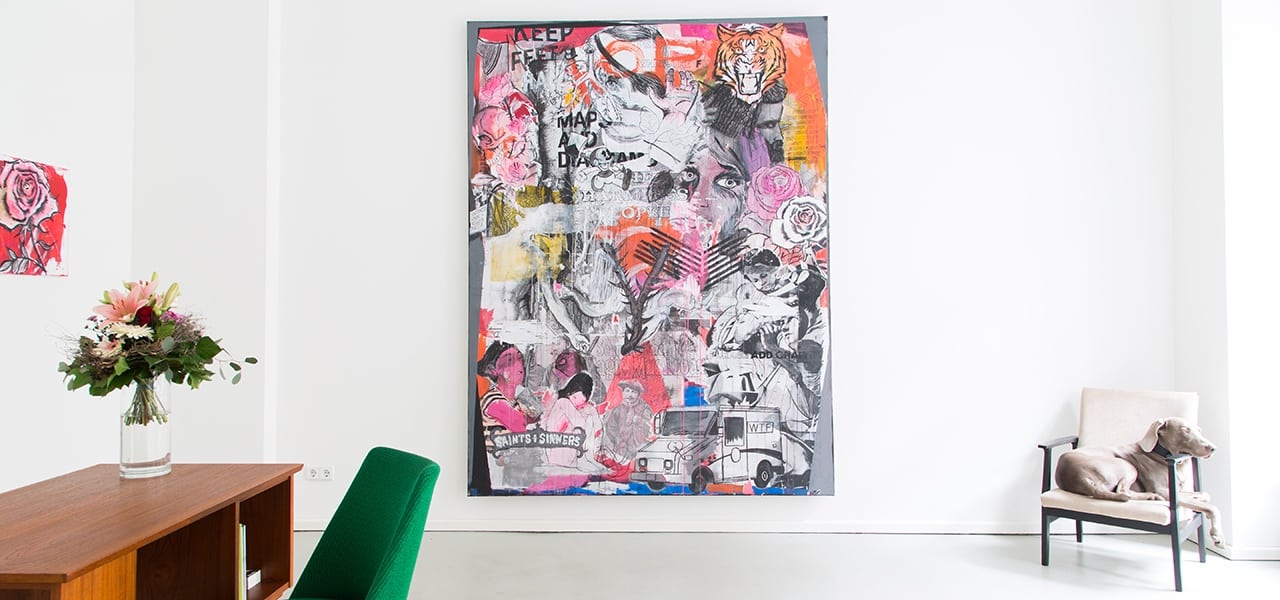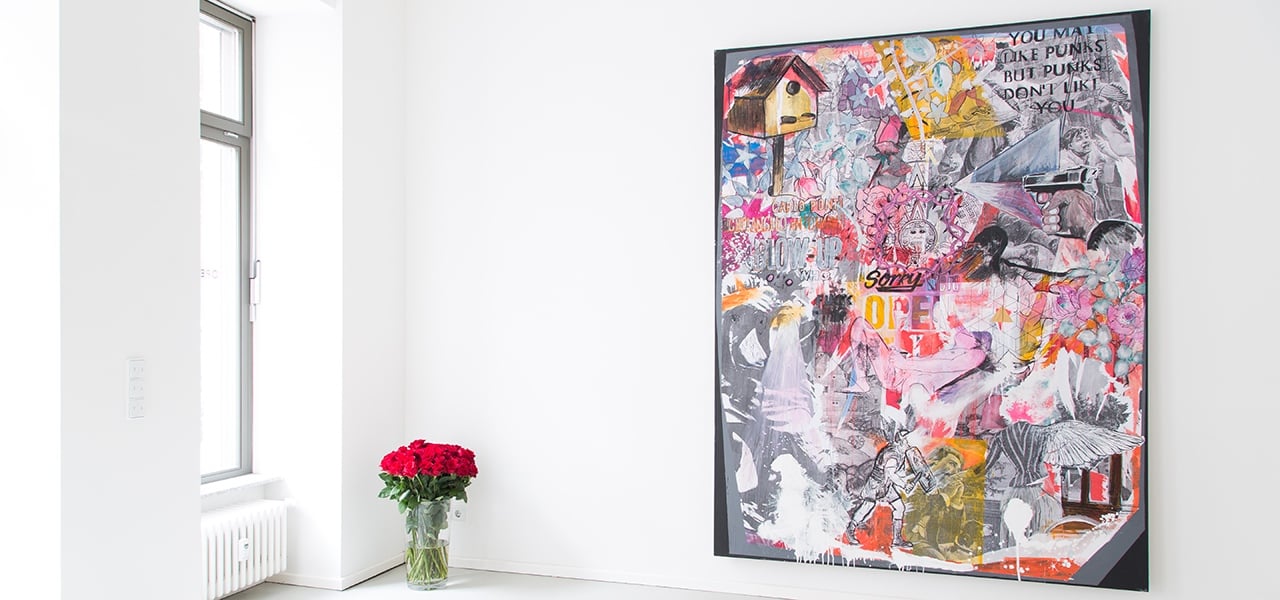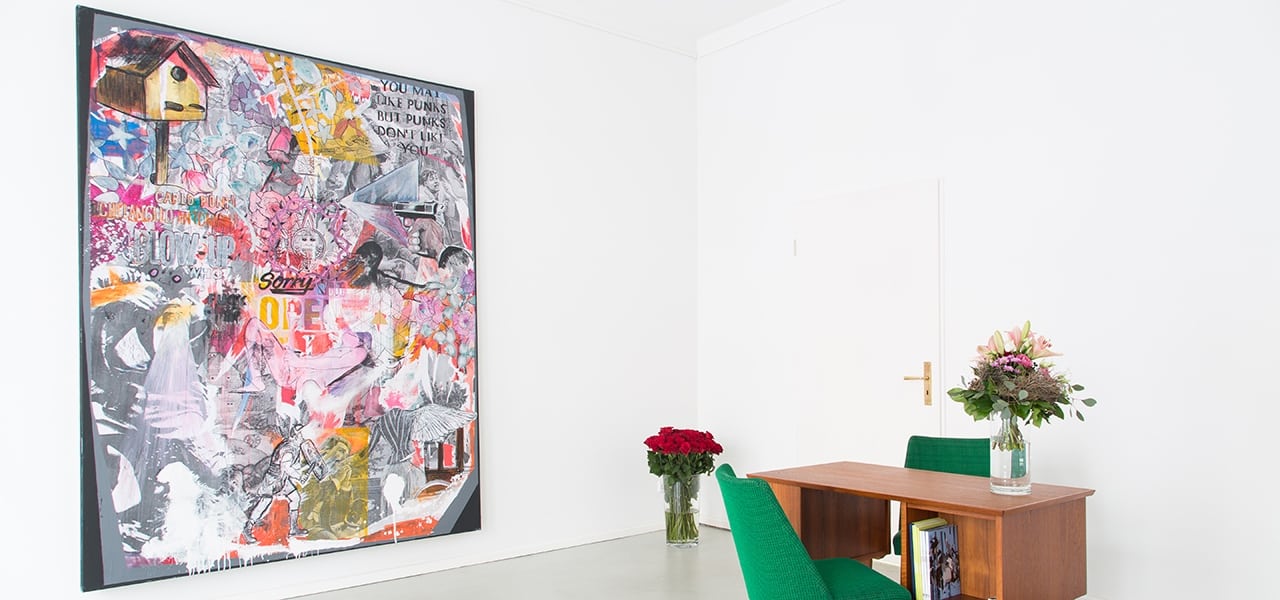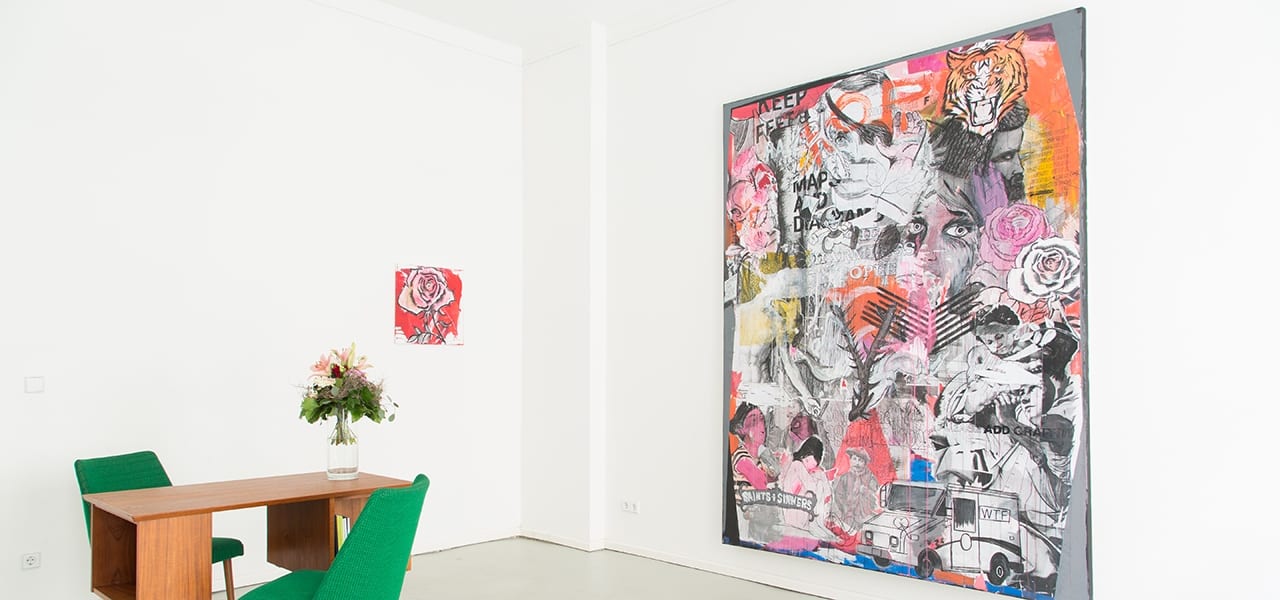
Anton Unai, a self-proclaimed visual poet, has built his artistic philosophy around the concepts of creative spontaneity and the rejection of aesthetic canons, contemplating on a chaotic state of the world we live in by employing equally anarchic visual language. Energetic to the point of destruction and violence, Unai’s artworks are a continuation of the existentialist and nihilistic philosophical traditions, situated in the urban settings of our contemporaneity. By using urban debris and discarded consumerist rubble, Anton Unai creates cluttered compositions, reflecting on the ambiguous nature of human beings, trapped between their fallacies and deeply hidden potential for greatness. This January, Anton Unai is back at OPEN WALLS Gallery with a new installation and this spontaneous undertaking is a great occasion to be reminded of his intriguing artistic approach.

Visual Poetry in the Work of Anton Unai
A self-taught artist from Catalonia, Anton Unai was a resident of several European cities before finally settling in Berlin. While exhibiting his work internationally since the mid-2000s, Unai has often been labeled as a street artist, because of his choice to work with found objects and discarded materials he stumbles upon while wandering the streets. However, urban detritus is only the starting point in the journey toward the discovery of intimate, sentimental experiences of urban dwellers and modern day humanity. Unai once stated in an interview for Daily Metal that gathering materials from the streets is like gathering “forgotten dreams, evictions and past lives”, and in this regard, it is no wonder why he prefers to be classified as a poet, rather than street or urban artist. Through deconstruction and reconstruction of the ordinary and familiar, he exposes the beauty in the rubbish, establishing a unique, poetic visual language. While some of his works are introspective or self-referential, other tend to draw from a deep well of cultural references, literary and philosophical, displaying a high level of erudition from the artist.

Polyphony in Chaos and Spontaneity of Expression
As mentioned previously, spontaneity and improvisation are essential to Anton Unai’s artistic approach. Following the legacy of Joseph Beuys, Anton Unai prefers to create on-site, underlining the importance of action and gesture. His works are rarely premeditated and, in a way, the artist’s creative process can be interpreted as an extension of Dadaist and Surrealist methods of automatism. Unai’s abundant and rough compositions often appear messy and chaotic, but to the delicate eye, they offer a rich field of symbols and metaphors seized from the plethora of cultural traditions. Unai’s versatile oeuvre is filled with meta-narratives, pop imagery, literary references and religious iconography, entities brought together and recontextualized to reflect on the state of the world today, human vulnerability and the tragedy of life.

Revealing Thorns in Roses
As part of his spontaneous collaboration with OPEN WALLS Gallery, Anton Unai recently created two new large canvases, which are currently on display side by side on the gallery walls. As in his previous works, Anton Unai continues to explore the absurdity of human condition and dualistic nature of human existence focusing on the concept of duality from the phenomenological point of view. The project titled Thorns in Roses embodies the idea of the duality in several ways. First, there is a common reading of thorns and roses metaphor, showing how things are never what they appear to be at the first glimpse and the title serves as a simple introduction to the complex philosophical concept of phenomenology. Fittingly titled The Phenomenology of Mind and The Phenomenology of Spirit, two new canvases are in a dialogue with each other, presenting two juxtaposed, yet complementary aspects of human condition – rational and spiritual, logic and intangible. As the artist states, the two works face “parallel metaphors on beauty, monstrosity, refinement and pain”, and we could add that they reflect on two different approaches to our realities where one can rarely exist without the other. Thorns in Roses installation will be on view through January 30th, 2016.